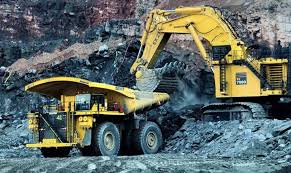Barrick Gold Corporation has reportedly found uranium in the drinking water of an open section of its Lumwana copper mine in Zambia.
This is according to The Globe and Mail as seen by Zambia Monitor on Friday. The development has forced the mine to halt the water supply and switch to other water sources for its workers in the section.
Read more: Barrick Gold announces $2 billion expansion plan for Zambia’s Lumwana mine
The Zambian mine had become increasingly important to Barrick’s future.
The Toronto-based company announced plans for a US$2-billion expansion at Lumwana to create one of the world’s biggest copper mines, with construction to begin late this year and production from the project expected by 2028.
Tests of drinking water in the mine’s Chimiwungo open section on November 8 found a Uranium level of 0.037 milligrams per litre, exceeding Zambia’s maximum allowable limit of 0.03 milligrams, according to a statement by Barrick’s country manager in Zambia, Anthony Malenga.
Canada’s health guidelines are set to have a maximum of 0.02 milligrams, so the level at Lumwana was nearly twice the Canadian limit.
In an internal e-mail on November 8, 2023 seen by The Globe and Mail, a Barrick official said the drinking water was “high in uranium” and “contaminated with uranium.” The official, Oreen Kinyanta, told colleagues: “Please don’t use it.”
The company said it immediately stopped the supply of water to the workforce in the affected area and switched to bottled water.
On February 20, 2024 the company reportedly began taking water from a municipal water treatment plant, allowing the bottled water to be discontinued, according to an internal memo seen by The Globe.
Malenga, in a statement sent to a Zambian newspaper last month, said the employees were exposed to uranium for two days, but their exposure was “negligible due to both the duration and low concentration.” The calculated uranium exposure was “well
In a brief statement to The Globe, Barrick said the incident was isolated to a small part of the mine, caused no damage to anyone’s health and posed no risk to other employees, contractors or people in surrounding communities.
The company said it does not produce uranium at Lumwana in any form.
Uranium and copper ore can be embedded in the same rocks.
From 2008 to 2011, Lumwana stockpiled more than four million tonnes of uranium as a byproduct of its copper production when the mine was owned by Equinox Minerals.
Barrick acquired the mine from Equinox for US$7.3 billion in 2011. Equinox had planned to build a uranium processing facility at Lumwana and Barrick executives said in 2011 that the company would consider the same option. But ultimately it did not pursue the processing plan.
WARNING! All rights reserved. This material, and other digital content on this website, may not be reproduced, published, broadcast, rewritten or redistributed in whole or in part without prior express permission from ZAMBIA MONITOR.












Comments